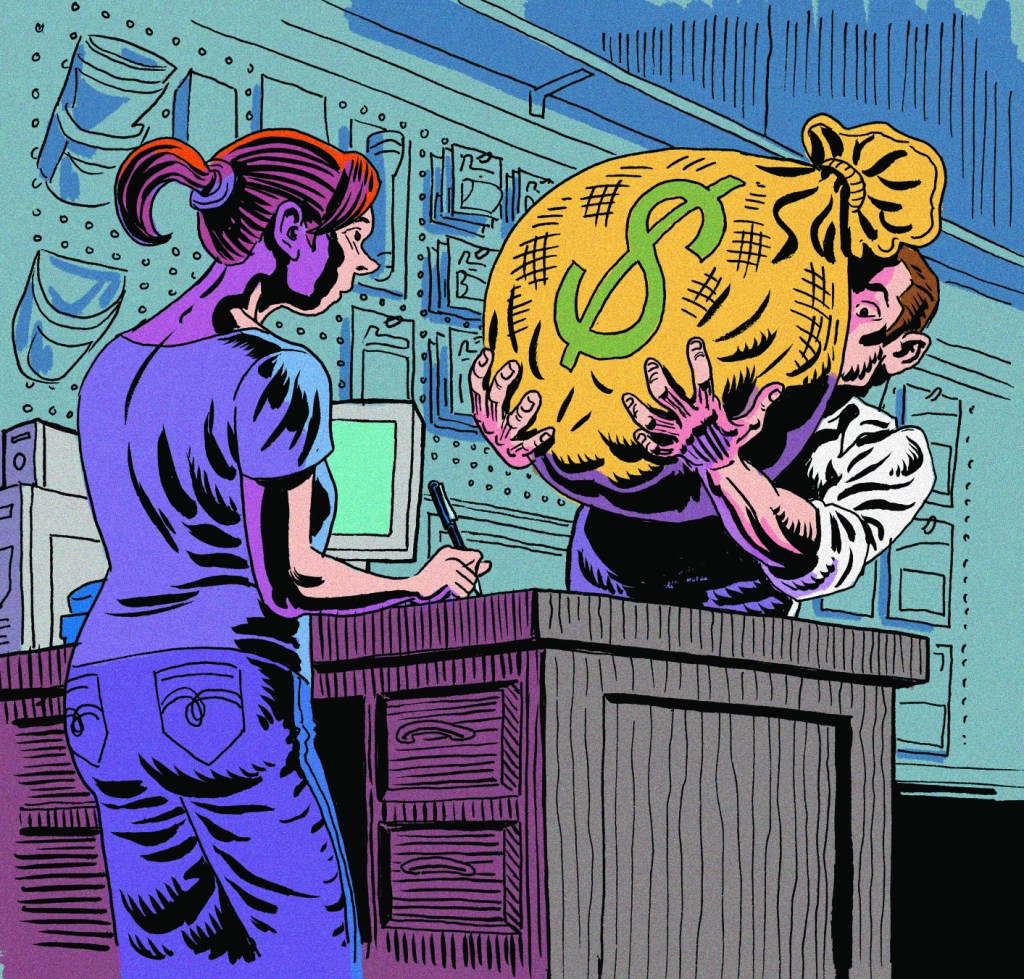In California’s Humboldt County, a region as renowned for the quality of its marijuana as nearby Napa is for its wine, a delivery by The Mill Yard typically takes an extra half hour because the driver has to count the cash he’s receiving for his C.O.D. order.
Meanwhile, in Colorado, Scott Yates used to think it unusual if he had more than $500 in cash in his safe at Denver Lumber. Now he’s not surprised if he has thousands.
Welcome to a wacky offshoot of America’s fast-flowering marijuana industry, in which dealers find themselves lugging to the banks sacks of cash “as heavy as a 5-year-old,” as The Mill Yard’s Arrenia Grubb puts it. As our special report shows, states may be relaxing their laws on consumption and cultivation, but the feds remain strict. Banks can’t take proceeds derived from pot because it’s seen as possible money laundering. As a result, people engaged in growing pot or legitimately selling it find themselves with huge amounts of cash. So when they want to use some of that money to remodel their home, they typically pay for it in greenbacks.
You can find the biggest impact on dealers in states that have relaxed pot laws in general and are starting to permit cultivation in particular. In California, where there are an estimated 50,000 growers, legislative analysts predict the annual tax revenue from legitimate marijuana sales will top $1 billion. Colorado legally sold $2.1 billion worth of pot last year, netting the state over $200 million in taxes.
For Yates, the money he’s seeing enter his store is slightly unnerving. He’s calmed a bit by the fact that his bank is located across the street. but he still takes care to make sure he doesn’t deposit $5,000 or more in cash for any particular transaction. When you get close to a $10,000 cash deposit, you run the risk of an investigation.
For Grubb, The Mill Yard’s manager, pot is so entrenched in the area economy that it’s just one more business challenge. Humboldt is huge—as big as Rhode Island and Delaware combined, with more than 110 miles of coastline. It’s also heavily forested and has just 135,000 residents. To serve them, Grubb says it’s common for customers to call The Mill Yard’s office in Arcata and request products that will be paid for on arrival. The yard’s truck drivers then drive as many as five hours to make a delivery. Once they get there, they count the money, write a receipt, and drop off the goods.
“It’s nothing for the delivery truck drivers to have $6,000, $7,000, $8,000 in cash,” Grubb says. And typically those bills come in singles, fives, and tens. “It can easily take 20 to 30 minutes to count the cash and write a receipt.” And if you have $9,000 in fives, clearly you have to count them more than once. It’s so common for drivers to be paid in cash that Grubb has investigated whether there are mobile cash-counting machines.
Notably, Grubb says the drivers have never been robbed.
“There’s a code of ethics out there,” she says. “They don’t mistreat who they do business with. They appreciate the fact that we’re so willing to accommodate their needs. Not everyone will go out to the goat roads.” Those deliveries aren’t the only source of cash. Even customers with accounts come in on the 9th of the month and pay in cash.
As for her employees, Grubb says she tests for drugs and alcohol but doesn’t bother with marijuana. “I ran a medical staffing company for 12 years and hired thousands of traveling medical staff over the years,” Grubb says. “I got to be very good at diversion—at spotting signs of drug use.”
Learn more: See our special report on marijuana and LBM as well as resources to address drug use in the workplace.

